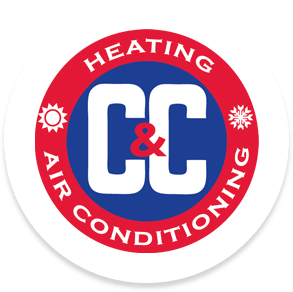Heat and Cool Efficiently With Energy Star

How Energy Star Helps Homeowners Save On Heating and Cooling
Heating and cooling costs represent a significant part of the average homeowner’s budget. So, finding ways to improve energy efficiency to contain those costs is important. One of the best ways any homeowner can do that is to turn to heating and cooling systems that bear the Energy Star seal of approval. They’re among the most efficient systems available and can help homeowners save significant sums on their energy bills. Here’s everything you need to know about how to heat and cool efficiently with Energy Star.
What Is Energy Star?
Energy Star is the name of a joint program run by the U.S. Department of Energy and the Environmental Protection Agency. Its purpose is to provide consumers with accurate and unbiased energy usage information they can trust when buying major appliances. Also, the Energy Star logo serves as a critical shorthand to let consumers know if a given appliance meets the program’s strict efficiency standards.
When it comes to heating and cooling your home, installing an Energy Star-certified HVAC system is the best way to save on energy costs. To understand why that is, though, you’ll need to know how efficient a given heating or cooling system must be to qualify for the program. Here’s what the Energy Star logo means when you see it on an air conditioner, furnace, or heat pump.
Energy Star Efficiency Standards for Air Conditioners
Here in the U.S., the standard measure for air conditioner efficiency is something called SEER. That stands for seasonal energy efficiency ratio. It’s a rating system that expresses how much energy you might expect an air conditioner to use throughout an average cooling season. It begins with finding out the energy efficiency of the unit, which is expressed as the result of cooling output in BTUs divided by the power used by the unit. The SEER rating takes that efficiency number and then assumes you’ll use your air conditioner at:
- 100% power for 1% of the cooling season
- 75% power for 42% of the cooling season
- 50% power for 45% of the cooling season
- 25% power for 12% of the cooling season
By plugging in an air conditioner’s efficiency figure into the simulated season represented by the above assumptions, you get a simple number. That’s your SEER rating.
To qualify for the Energy Star Program, a central air conditioner must have a SEER rating of at least 15. By comparison, the average newly installed central air conditioner here in the U.S. has a SEER rating of 13. For context, a three-ton central air conditioner with a SEER rating of 15 will save you approximately 13% on energy costs compared to a three-ton unit with a SEER rating of 13. In other words, using an Energy Star-certified central air conditioner is a great way to save on cooling costs.
Energy Star Efficiency Standards for Heating Systems
Like air conditioning systems, heating systems can also qualify for the Energy Star program. However, they qualify using different efficiency metrics. For gas- and oil-powered heating systems, an AFUE rating, or annual fuel utilization efficiency rating, is the standard. AFUE ratings let you know what percentage of fuel a given furnace will turn into usable heat for your home.
To qualify for the Energy Star program, a furnace must have an AFUE rating of 83 or higher. However, it’s not uncommon to find Energy Star-rated furnaces with AFUE ratings above 90, with the most efficient among them reaching ratings of up to 98.5. And since AFUE ratings are equivalent to percentages, it’s much easier to compare them than it is for SEER ratings.
For example, a furnace with an AFUE rating of 80—which is common in homes throughout the U.S.—essentially wastes 20% of the fuel you put into it. By comparison, the worst Energy Star-rated heating system would only waste 17% of its fuel input. That amount of waste doesn’t sound like much, but it adds up in a hurry.
That’s especially true if you choose to install a heating system near the top of the Energy Star rating list. Since the average residential gas bill costs U.S. homeowners about $63.69 per month, and the average home has a heating system with an AFUE rating of 80, the math is simple. Replacing that heating system with one that has a 98.5 AFUE rating would yield $11.78 worth of savings every month during the heating season.
Energy Star Efficiency Standards for Heat Pumps
It’s also worth delving into what Energy Star standards apply to heat pumps since they’re becoming a popular option in Michigan. They’re popular because they offer efficiency that few conventional heating and cooling solutions can match. Since heat pumps can provide both heating and cooling, though, they must meet Energy Star efficiency standards for both functions to qualify for the program.
Just like conventional air conditioners, Energy Star-certified heat pumps must have a SEER rating of at least 15 when operating in cooling mode. However, many modern heat pumps feature SEER ratings between 18 and 24, making them excellent choices for cost-conscious homeowners.
Since heat pumps don’t use conventional fuels for heating, though, their efficiency is not measured using AFUE. Instead, they use an efficiency measurement called the heating season performance factor, or HSPF. An HSPF rating is like a SEER rating in that it tells consumers approximately how much energy a heat pump might consume during ordinary seasonal use.
Unlike a SEER rating, however, an HSPF rating comes from a more straightforward formula. Specifically, it tells you how much heat a heat pump will deliver for each kilowatt-hour of electricity consumed. To understand an HSPF rating, all you need to do is multiply it by 1,000. That will tell you exactly how many BTUs of heat the unit produces per kilowatt-hour.
To qualify for the Energy Star program, a heat pump must have an HSPF rating of at least 8.5. Most heat pumps on the market today exceed that rating. In fact, it’s not uncommon to find Energy Star-rated heat pumps with HSPF ratings of 10 or higher.
Energy Star HVAC Systems Save Money
The bottom line is that any time you invest in an HVAC system bearing the Energy Star logo, you can rest assured that it will save you money on your energy bills. Better still, the Energy Star program covers central air conditioners, furnaces, and heat pumps so you’ll always be able to find a unit that fits your home’s needs.
When the time comes for you to upgrade your home’s HVAC system to a more efficient model, C & C Heating & Air Conditioning can help. Our expert staff can advise you about a system that will fit your purchase budget while saving you money on your heating and cooling costs. Our technicians can install whichever system you choose once you’ve made a decision. We can also provide you with HVAC maintenance services to help you get years of high-efficiency performance from your new HVAC system.
If you’re interested in a new Energy Star-rated air conditioner, furnace, or heat pump, contact C & C Heating & Air Conditioning today!





